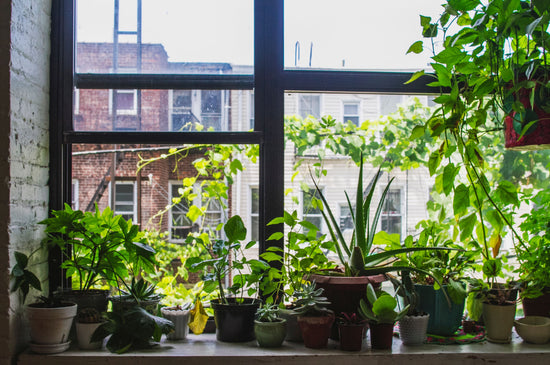How to Water Plants: A Comprehensive Guide
Watering plants may seem like a simple task, but doing it correctly can make a significant difference in the health and vitality of your indoor garden. Every plant has unique watering needs, and understanding how to tailor your watering habits can help your greenery thrive. This guide provides detailed insights into watering techniques, how to identify the specific needs of your plants, and common mistakes to avoid.
Why Proper Watering Matters
Water is essential for photosynthesis, nutrient transportation, and maintaining cell structure in plants. Overwatering or underwatering can lead to a host of problems, including root rot, nutrient deficiencies, and stunted growth. Learning how to meet the watering needs of each plant ensures they stay healthy and vibrant.
Factors to Consider When Watering Plants
-
Plant Type
Different plants have varying watering requirements. For example, the Lifesaver Cactus needs minimal water and prefers dry soil between waterings, while the Heart Fern thrives in consistently moist soil. -
Soil Type
The type of soil greatly impacts water retention. Well-draining soil, such as that used for the Fairy Castle Cactus, prevents waterlogging, while rich, organic soils are ideal for plants like the Peace Lily. -
Light Conditions
Plants in bright, sunny locations dry out more quickly than those in shaded or low-light areas. For example, the Spider Plant may need more frequent watering in a sunny window compared to a shaded corner. -
Pot Size and Type
Smaller pots dry out faster than larger ones. Terracotta pots also absorb water, which can dry the soil more quickly compared to plastic or glazed ceramic pots. Hanging plants like the Green English Ivy may require adjustments to watering schedules.
How to Water Plants Properly
-
Understand Your Plant’s Needs
Research your plant’s natural habitat and watering preferences. Tropical plants like the Multi-Colored Bromeliad Planter enjoy high humidity and evenly moist soil, while succulents and cacti prefer infrequent, deep waterings. -
Check the Soil
Before watering, test the soil’s moisture level. Insert your finger about an inch into the soil. If it feels dry, it’s time to water. For moisture-sensitive plants like the English Ivy Trio, regular soil checks can prevent overwatering or drying out. -
Water Evenly
Water the soil around the plant evenly to ensure all roots are hydrated. Avoid watering directly onto leaves, as this can cause fungal issues, especially in plants like the Heart Fern. -
Allow for Drainage
Use pots with drainage holes to prevent water from pooling at the bottom. Empty saucers regularly to avoid root rot. -
Adjust for the Season
Plants often require less water in winter due to slower growth. Monitor your watering habits accordingly to avoid overwatering during dormant periods.
Common Watering Mistakes
-
Overwatering
Signs include yellowing leaves, mushy roots, and a foul odor from the soil. Cacti like the Fairy Castle Cactus are particularly sensitive to overwatering. -
Underwatering
Plants may wilt, develop crispy leaf edges, or show stunted growth. The Peace Lily is prone to wilting but quickly recovers with proper watering. -
Using Cold Water
Always use room-temperature water to avoid shocking your plants. -
Inconsistent Watering
Erratic watering schedules can stress plants. Establish a consistent routine tailored to each plant’s needs.
Advanced Watering Techniques
-
Bottom Watering
Place the pot in a tray of water and let it soak up moisture from the bottom. This method works well for plants like the Spider Plant, ensuring even hydration. -
Self-Watering Pots
These pots provide a steady supply of moisture, perfect for plants that prefer consistent watering. -
Using Mulch
For larger plants, adding a layer of mulch helps retain soil moisture and reduces the frequency of watering.
FAQs About Watering Plants
Q: How often should I water my plants?
A: It depends on the plant species, environment, and season. Check the soil moisture regularly and adjust accordingly.
Q: Can I use tap water for my plants?
A: Many plants tolerate tap water, but sensitive varieties like ferns may benefit from distilled or filtered water.
Q: Should I mist my plants?
A: Misting can help increase humidity for tropical plants but doesn’t replace proper soil watering.
Q: How can I tell if I’m overwatering?
A: Look for yellowing leaves, soggy soil, or a foul smell, which indicate excess water.
Watering is both an art and a science. By understanding the unique needs of each plant, such as the Lifesaver Cactus or Multi-Colored Bromeliad Planter, you can cultivate a thriving indoor garden. Take the time to observe your plants, and they’ll reward you with vibrant growth and beauty.





